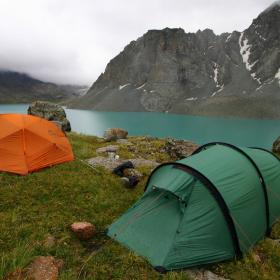Fergana Valley
Fergana Valley is a melting pot of cultures, nationalities, historical places and natural resources. Central Asian countries such as Kyrgyzstan, Tajikistan and Uzbekistan divide the valley between them.

Fergana Valley is a melting pot of cultures, nationalities, historical places and natural resources. Central Asian countries such as Kyrgyzstan, Tajikistan and Uzbekistan divide the valley between them. It is one the nods of The Great Silk Road and accommodated many medieval cities such as Osh, Samarkand, Kiwa, Khudzhand, Balasagun and others. Many of the historical places like Uzgen mausoleums were erected during that era. Fergana Valley is one of the most densely populated areas in Central Asia. It was and still is an important trade hub of the region and Eurasian continent overall. From ancient times, travelers and caravans stopped in Fergana to trade, enjoy delicious food, fresh fruits and nuts as well as other agricultural products. Historically Fergana Valley has been occupied by various empires, for example, it was part of territories of Alexander The Great and later became Russian Turkestan. During Soviet Union Fergana was conditionally divided for administrative purposes, and after of Societ Union collapse these administrative border had become international borders between existing today Central Asian countries. When it comes to natural resources on the territory of Kyrgyzstan Fergana hosts Walnut and fruit forests of Arslanbob and Fergana Ridge. Length on Fergana Ridge is 255 kilometers. Naryn and Kara-Darya rivers intersect in the heart of Fergana valley and form Syr-Darya which is used for irrigation purposes in agriculture. There are national parks Kyrgyz-Ata National Park and Kara-Shoro National Park.







